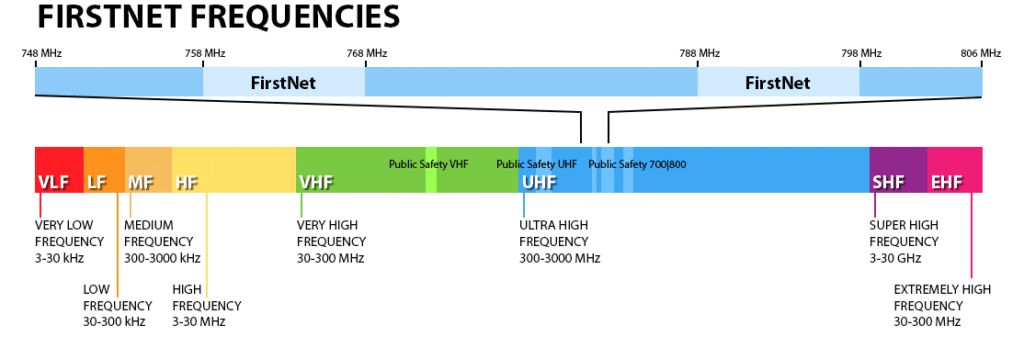Two-Way Radio
What is two-way radio and how do first responders use it?
Able to both receive and transmit radio signals, two-way radio is the most reliable form of voice broadcast communications when everyone involved needs to be able to hear every transmission. This group of users can select different frequency channels to use, so long as they are within the same frequency band (typically VHF, UHF, or 700/800MHz). Sometimes this creates problems between different public safety agencies, such as the police operating on VHF while the fire department is on UHF.

Types of Radio Systems
Direct mode (Simplex): Simple radio-to-radio communication, most reliable for short distances. The main disadvantage is its very limited range and inability to work well in larger buildings. Repeated: Radio transmissions in a repeated system are rebroadcast with higher power by a repeater, giving improved radio range over a wide area.
Components of Radio Systems
Portable Radios: Having the advantage of being small and portable, these radios come in 3 frequency band versions: VHF, UHF, and 700/800MHz. Typically, public safety radios have the capacity for over 1000 channels, but are limited in their transmission power to between 2.5W and 5W.
Mobile Radios: These radios are permanently installed in vehicles, giving them a higher power (25W to 50W) and a higher range than portable radios.
Repeaters: Basically a radio receiver combined with a powerful radio transmitter, all signals received by the repeater are then rebroadcast with higher power (50w to 300W). Some repeater systems even have multiple transmitters in order to cover a wider geographical area.
Radio Dispatch Console: These systems are used in 911 centers to connect radio dispatchers to the radio system, usually through a hard-wired connection.
